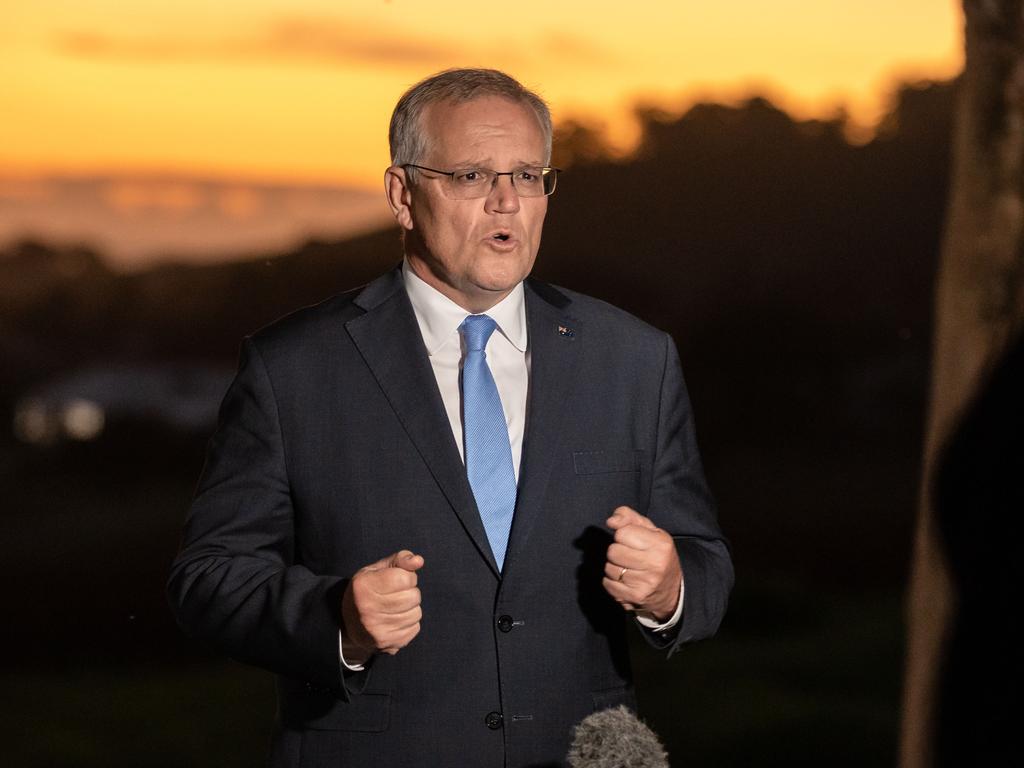Many Australians have been convinced their pay is shrinking and the country is on the cusp of 1970s-style wave of damaging inflation. This is bad news for the Coalition.
Voters are complacent about their job security.
The Morrison government is being given little credit for an unemployment rate that is approaching the lowest level in almost 50 years.
Households have managed an extra $250bn in savings through the pandemic, thanks in large part to huge injections of government cash.
Retail spending is booming, as are car sales. Yet we are devastated and angry that we have to pay more for fuel, which accounts for about 3 per cent of the average household’s spending.
We are freaking out about inflation reaching 3.5 per cent, and Labor has been hammering home the fact that “real wages” are going backwards.
Yet we are hardly in the grips of hyperinflation – most of the driving force has been because of spiking fuel prices and housing construction costs.
And while the ABS’s technical wage price index remains somnolent – for now – workers in aggregate are making more money.
Average earnings in the national accounts are rising much more quickly than consumer prices, Treasury says.
This reflects workers switching jobs to get better pay, or receiving bonuses and overtime from employers desperate to win and retain workers amid a national labour shortage.
It’s just a matter of time before this pay pressure bleeds through to multi-year enterprise bargaining agreements, and then to public sector pay packets.
Housing affordability is a real and massive issue. Homes are too expensive; accumulating a deposit is a Sisyphean task for young Australians as they watch the pace of property price gains outstrip their capacity to save.
On the other hand, there are a lot of crocodile tears: two in three households own their home, and almost half of those have no mortgage.
Households in total are $3.4 trillion richer than before the pandemic, an increase of 30 per cent. Australian homeowners also go to the polls knowing their mortgage bills are set to rise, potentially mere weeks after the election. They’ll go up regardless of who the punters put into power.
Economists anticipate a string of Reserve Bank rate hikes starting from June, with NAB predicting the cash rate will end the year at 1 per cent, and Westpac 1.25 per cent.
In the sweep of history, a cash rate of 1.25 per cent is still low, but the change in direction will be jarring for borrowers who have only seen rates go down for more than a decade.
CBA, the country’s largest home lender, has estimated there are more than one million home borrowers who have never experienced an increase in mortgage rates.
It’s enough to make anyone nervous. Poor households are doing it tough, and are most exposed to more expensive groceries and petrol and rising rents – although lower income Australians benefit from a stronger labour market as well. And the middle class, the homeowners, the quiet and aspirational Australians, the working families, the farmers, the tradies? It’s never perfect, but this is about as good as it gets.







In an era of fake news, the one about how the economy is in bad shape is a doozy.